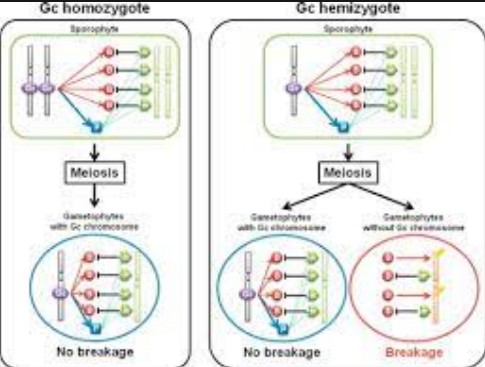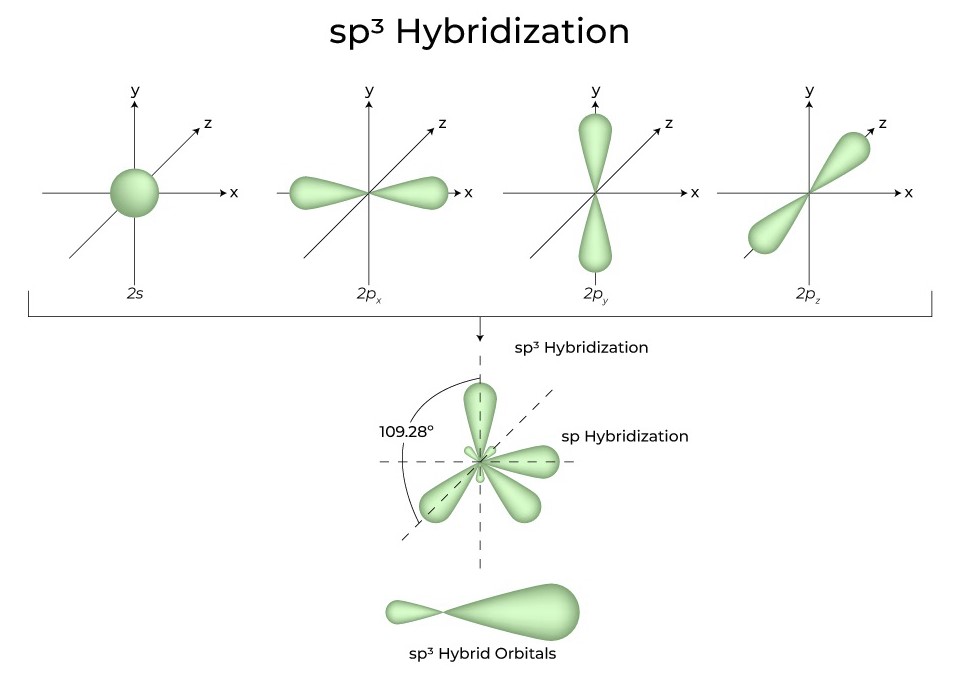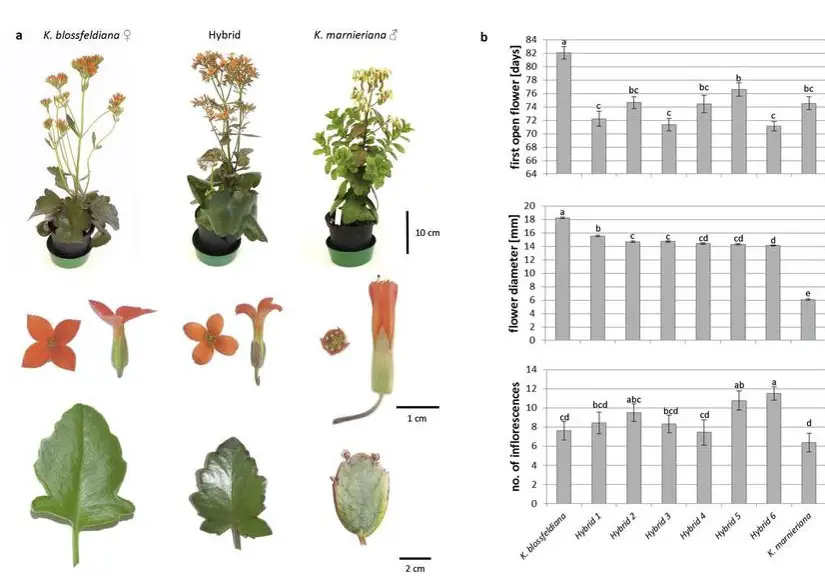Hybridization is a fundamental process in the evolution of species, involving the crossing of two organisms to produce offspring with mixed genetics. This process plays a pivotal role in enhancing biodiversity, contributing to the adaptability and resilience of species within their ecosystems. In agriculture and conservation, hybridization has been harnessed to develop crops with improved yields, resistance to pests and diseases, and to conserve endangered species by bolstering their genetic diversity.
The distinction between interspecific and intraspecific hybridization lies in the origin of the parent organisms. Interspecific hybridization occurs between individuals from different species, leading to hybrids that combine traits from both parents. Conversely, intraspecific hybridization involves the crossing of individuals within the same species, enhancing genetic diversity without crossing species boundaries. This difference has significant implications for the viability, fertility, and ecological impact of the resulting hybrids.
Hybridization’s impact extends beyond simple genetic exchanges. It influences species’ survival rates, adaptation capabilities, and even their evolutionary trajectories. In the realm of agriculture, it underpins efforts to secure food supplies against the backdrop of changing global climates and growing populations. In conservation, hybridization strategies are carefully deployed to rescue species from the brink of extinction, navigating the complex interplay between genetics and ecology to ensure biodiversity preservation.

Hybridization Explained
Types of Hybridization
Hybridization stands at the intersection of genetics and evolution, serving as a key mechanism for introducing new genetic combinations and traits in organisms. At its core, hybridization involves the mating of two individuals from different genetic lineages, leading to offspring that carry genes from both parents. This process can occur naturally in the wild or be induced by humans for specific purposes, such as improving crop yield or conserving endangered species.
Basic Definition and Significance
Hybridization is significant for several reasons. It can increase genetic diversity, which is crucial for the survival and adaptability of species. In the context of agriculture, it allows for the development of hybrid crops that are more productive, disease-resistant, and adaptable to varying environmental conditions. In conservation, hybridization can help bolster the genetic health of populations that are at risk of inbreeding and subsequent decline.
Key Concepts
- Genes: The basic unit of heredity in a living organism. Genes are responsible for the inheritance of traits from parents to offspring.
- Species: A group of individuals that can interbreed and produce fertile offspring in natural conditions.
- Evolution: The process by which different kinds of living organisms are thought to have developed and diversified from earlier forms during the history of the earth.
Understanding these concepts is essential to grasp the full scope and impact of hybridization on the natural world and human society.
Interspecific Hybridization
Definition and Scope
Interspecific hybridization occurs when individuals from two different species mate and produce offspring. This type of hybridization crosses species boundaries, leading to hybrids that can have characteristics of both parent species. Interspecific hybridization can be a natural phenomenon or a result of human intervention.
Examples in Nature
In nature, interspecific hybrids are often found in plants, insects, and some animal groups. For instance, the mule, a well-known hybrid, results from crossing a female horse with a male donkey. In the plant kingdom, the loganicot hybrid is a result of crossing different species within the Loganiaceae family.
Applications
Agriculture
Interspecific hybridization has been used to develop crops that resist pests and diseases, survive environmental stresses, or produce higher yields. For example, the Triticale is a hybrid of wheat and rye, combining the quality of wheat with the hardiness of rye.
Conservation
In conservation efforts, interspecific hybridization may be used to increase genetic diversity in populations at risk of extinction, helping to ensure their survival.
Biotechnology
Biotechnological applications include the creation of genetically modified organisms (GMOs) for various purposes, such as pharmaceutical production or improved agricultural traits.
Challenges
The main challenges of interspecific hybridization include genetic barriers, such as differences in chromosome number, which can affect the viability and fertility of hybrids. Additionally, there are concerns about the ecological impact of releasing hybrids into the wild, where they may outcompete native species.
Intraspecific Hybridization
Definition and Scope
Intraspecific hybridization refers to the crossing of individuals within the same species but different genetic lines or populations. This type of hybridization enhances genetic diversity within the species without introducing foreign genetic material from another species.
Examples in Nature
Intraspecific hybrids are common in both the animal and plant kingdoms. For instance, dog breeding often involves the crossing of different breeds within the Canis familiaris species to produce dogs with desired traits.
Applications
Crop Improvement
In agriculture, intraspecific hybridization is used to develop new crop varieties with desired traits, such as improved taste, nutritional value, or resistance to diseases and pests.
Livestock Breeding
Livestock breeding also relies on intraspecific hybridization to enhance traits like milk production, growth rate, and adaptability to environmental conditions.
Benefits
The primary benefits of intraspecific hybridization include increased genetic diversity and disease resistance. This genetic diversity is crucial for the adaptability and resilience of species, allowing them to thrive in changing environmental conditions.

Comparing Interspecific and Intraspecific
The journey into the realms of interspecific and intraspecific hybridization reveals a complex tapestry of genetic intricacies, reproductive strategies, and their implications for biodiversity and ethical considerations. These two forms of hybridization, while sharing the fundamental goal of enhancing genetic diversity, diverge significantly in their methodologies, outcomes, and the challenges they present.
Genetic Complexity
Genetic Differences and Outcomes
The genetic makeup of interspecific hybrids often showcases a mosaic of characteristics derived from two different species. This complexity can lead to unique traits but also introduces challenges, such as reduced fertility or viability. Intraspecific hybrids, while genetically diverse, retain a more homogenized genetic structure, facilitating easier integration into existing populations without the complications often associated with crossing species barriers.
Reproductive Barriers
Overcoming Natural Barriers
Interspecific hybridization confronts significant natural reproductive barriers, including mating behaviors, habitat preferences, and chromosomal differences. Technological and methodological advancements, such as artificial insemination and genetic engineering, have enabled us to overcome some of these barriers. Intraspecific hybridization, on the other hand, faces fewer natural obstacles, as the crossing occurs within the species, making the process more straightforward and typically more successful.
Success Rates
Viability and Fertility of Hybrids
The success of hybridization efforts is often measured in terms of offspring viability and fertility. Interspecific hybrids tend to have lower success rates due to the aforementioned genetic complexities and reproductive barriers. Intraspecific hybrids, however, usually exhibit higher viability and fertility, contributing positively to the genetic pool of their species.
Ethical Considerations
Biodiversity Impacts and Ethical Breeding
The ethical dimensions of hybridization extend beyond the laboratory or field, touching upon concerns related to biodiversity conservation, genetic manipulation, and the potential for unintended ecological impacts. The creation of hybrids, especially interspecific ones, necessitates a careful evaluation of their potential to disrupt local ecosystems, compete with native species, and the long-term sustainability of such genetic interventions.
Applications in Detail
Agriculture
Enhancing Crop Yield and Resistance
In agriculture, hybridization serves as a cornerstone for developing resilient crop varieties. Through both interspecific and intraspecific crossings, scientists and farmers have succeeded in creating hybrids that exhibit enhanced yield, disease resistance, and tolerance to environmental stressors. These advances not only bolster food security but also contribute to sustainable farming practices.
Conservation
Preserving Endangered Species
In the realm of conservation, hybridization, particularly intraspecific, is employed to enhance genetic diversity and resilience in endangered species populations. This strategy has been instrumental in efforts to prevent extinction and maintain ecological balance, though it is applied judiciously to avoid compromising the genetic integrity of wild populations.
Biotechnology
Genetic Engineering and Future Prospects
Biotechnology harnesses hybridization at the molecular level, creating opportunities for genetic modifications that can lead to breakthroughs in medicine, agriculture, and environmental conservation. The fusion of genetic engineering with traditional hybridization techniques promises to revolutionize our approach to combating diseases, improving crop efficiency, and even addressing climate change challenges.
Challenges and Considerations
Genetic Stability
Issues with Hybrid Vigor and Weakness
While hybridization can result in hybrid vigor, enhancing certain traits, it can also lead to hybrid weakness in subsequent generations. Maintaining genetic stability and preventing the dilution of beneficial traits over time requires careful planning and management of hybrid populations.
Ecological Impact
Effects on Native Species and Environments
The introduction of hybrids into natural ecosystems carries the risk of unintended consequences, including the displacement of native species, disruption of local food webs, and the potential for new, invasive species to emerge. These risks underscore the importance of conducting thorough ecological assessments before releasing hybrids into the wild.
Ethical and Social Implications
Manipulation of Natural Processes
The manipulation of genetic material through hybridization raises profound ethical and social questions about the boundaries of scientific intervention in nature. The responsibility to weigh the benefits of hybridization against its potential to alter ecosystems and species underscores the need for ethical oversight and public engagement in genetic research.
Frequently Asked Questions
What is genetic hybridization?
Genetic hybridization refers to the process where two different individuals mate to produce offspring that have a combination of genetic material from both parents. This can happen either within the same species (intraspecific hybridization) or between different species (interspecific hybridization), leading to genetic diversity and potentially new traits in the offspring.
How do interspecific and intraspecific hybridization differ?
The key difference between interspecific and intraspecific hybridization lies in the species of the parent organisms. Interspecific hybridization involves parents from different species, resulting in offspring with mixed-species genetics. Intraspecific hybridization, on the other hand, occurs within the same species, enhancing genetic diversity without crossing species barriers. This distinction affects the hybrids’ genetic makeup, viability, and potential ecological impact.
Why is hybridization important in agriculture?
Hybridization is crucial in agriculture for developing crops with desirable traits, such as increased yield, pest and disease resistance, and improved nutritional profiles. By combining the genetic material of different plants, either within the same species or across species, breeders can create hybrids that are better suited to various environmental conditions and challenges, ensuring food security and sustainability.
Can hybridization lead to new species?
Hybridization can, under certain conditions, lead to the emergence of new species, a process known as speciation. This typically requires the hybrid offspring to be reproductively isolated from both parent species, allowing them to evolve independently. While this is more common in plants, it is less frequent in animals due to the reproductive barriers and genetic incompatibilities involved.
Conclusion
The exploration of interspecific and intraspecific hybridization opens a window into the intricate mechanisms that drive biodiversity, species evolution, and agricultural innovation. By understanding the fundamental differences between these two forms of hybridization, researchers and practitioners can leverage genetic diversity to address pressing global challenges, from food security to the conservation of endangered species.
The future of hybridization research promises not only advancements in our understanding of genetic sciences but also practical solutions to enhance crop resilience, conserve biodiversity, and sustainably manage our natural resources. As we continue to unlock the potential of hybridization, its role in shaping the future of our planet remains a testament to the power of combining genetic diversity with scientific innovation.

